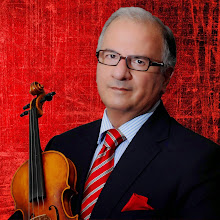
The controversial and revered poet
Forough Farokhzad (1935-1967) is Iran's greatest contemporary poet, one of the most influential writers of the Middle East, and one of the world's best loved women poets of the twentieth century.
During her short lifetime Forough became a legend. Having sold over a million copies of her work, Forough holds a significant place in world history because she was the first woman in twenty-five hundred years to have a major body of work published in Iran and to emerge above all of Persia's contemporary poets as the greatest poet--a woman who in the land of heroes became a heroine.
Forough was not only a polemical figure during her lifetime, but since her death her poetry has come to be a powerful anthem for freedom. During the Iranian Revolution, for example, students would publicly recite her poem "My Heart Aches for the Garden" in protest to the tyrannical Khomeini regime. In fact, her work was considered such a threat to the dictatorial policies that when her publisher refused to stop printing her poems, he was put into jail and his factory was burned down to the ground.
With rare emotional depth, Forough's work is sincere, sensual, earthy, evocative, and an intriguing combination of love story, stormy passions, loss, betrayal, freedom, and most importantly, renewal. A poet of the 1960s, her poetry reverberates with issues of love and freedom and speaks to us as much today as when she first wrote them.
Here is a translation of one of her poems, "All That Is Left Behind . . .":
Why should I stand still?
Why?
The birds have gone looking for water
The horizon has been turned upside down
And motion spills out like a fountain
As far as the eye can see
Radiant planets are spinning
Earth reaches its apogee and repeats its orbit
And the blackholes in the atmosphere
Turn into tunnels that are connected to each other
While daytime occupies such space
That in the small mind of a newspaper
Not even an earthworm can fit
Why should I stand still?
The road passes from in between the tiny capillaries of life and continues
The climate: the atmosphere surrounding the uterine ship of the moon
Destroys any rotten cells
And in the chemically charged air after sunrise
All that is left behind is sound
A sound which will become one with the particles of time
Why should I stand still?
What can a swamp be?
What can it be other than a place where degenerate insects lay their eggs
The thoughts of a morgue counting swollen corpses
A coward hides his lack of manhood in the darkness
And a cockroach . . . ah
When a cockroach speaks
Why should I stand still?
The marriage of newspaper and ink is useless
The marriage of newspaper and ink will not save a small mind
I am an offspring of the trees
Breathing stale air is oppressive
(A bird that died told me to learn its flight)
The ultimate end of all forces is unification
To unite with the source of the sun
And to disperse into rays of light
It is only natural
For windmills to dry out and crumble
Why should I stand still?
I will take the unripe sheaves of wheat to my breast
And give them milk
Sound, sound, sound
The pleading sound of clear running water
The sound of light pouring down from the stars
Over the feminine body of the earth
The sound of the union of egg and sperm
The unbound thoughts of consummated love
Sound, sound, sound, all that is left behind is sound
In the land of dwarves
The standard of measurement always orbits around zero
Why should I stand still?
I abide by the laws of the four elements
And the task of writing out the constitution of my heart
Is not the work of the blind local government
What do the long savage howls
Of the reproductive organs of animals have to do with me?
What do the infinitesimal movements of a maggot
In decaying flesh have to do with me?
My life is bound up with the bloodline of flowers
Do you understand the bloodline of flowers?
The article is written and the poem is translated by Meetra A. Sofia, American Poetry Review
 Four tallest structures in the world are:
Four tallest structures in the world are:

